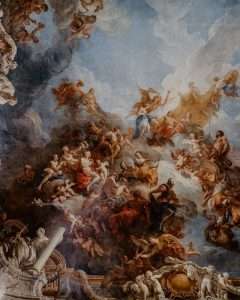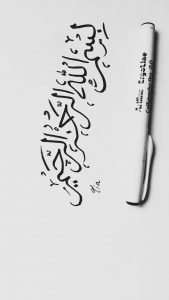Whenever I get an email from Neil, my heart skips a beat. He is one of the most brilliant people I know. His career in dance and choreography is so wildly successful that he is too humble to boast about it. But his latest venture into the blogosphere (A Blog About the Importance Surrounding the Illegal Use of Native American Artifacts Through History ) is another example of his genius.
I had never heard of Art Attack until Neil asked if he could use our logo on his site. He told me that he hoped to spark a dialogue about the importance surrounding the illegal use of Native American artifacts through history. According to Neil, much of this has to do with the fact that when they were stolen, many tribes were not protected under United States law and therefore, could not sue for their return .
Art Attack aims to reach out to those who have these artifacts and work towards their legal return where possible . We are proud to support this important cause.
The importance of protecting and preserving what is left of our history can not be put into words. The damage that has been done in the name of “science” is almost too much to bear.
Everything around us was once considered sacred, even the dirt beneath our feet. We are on a path to recovery, but it will take time, and it will take education.
The Native American Graves Protection and Repatriation Act (NAGPRA) was passed in 1990. This act was created by Congress to address the issues of grave robbing and theft of artifacts from Native Americans’ burial grounds. In order to enforce this act, there are penalties for those who break it. However, penalties vary depending on the tribe involved with the artifact in question.
The United States is considered to be a place where free speech reigns. Whether or not you agree with this statement, one thing is for certain: freedom of speech does not mean freedom from consequences. In light of the recent cultural controversy surrounding the sale of Native American artifacts, many have called for new laws that protect these items as sacred objects.
The illegal trafficking of Native American artifacts has been going on since Europeans first arrived in the Americas and began stripping tribal sites of their valuable resources. This is due largely to the fact that Native American relics are seen as collectable items, like coins or stamps, rather than cultural objects.
The majority of Native American artifacts come from graves or burial grounds, making their sale a highly inappropriate act. The majority of people who purchase these artifacts do so under false premises, assuming that the sale is legal and even encouraged by tribal elders. As culture theft becomes more prevalent in the United States, there has been an increasing call for stricter protection of tribal artifacts.
The issue lies with how these items are obtained from tribes in the first place. Since these objects belong to religious groups, it can be argued that they should be off-limits because they do not fall under the category of protected free speech.*
The Native American Graves Protection and Repatriation Act (NAGPRA) was passed in 1990. It was designed to protect the remains and burial items of Native Americans as well as objects deemed sacred by them. This act also allows tribes to reclaim their heritage that has been appropriated by museums or collectors. NAGPRA requires federally funded institutions to return human remains and cultural items to the appropriate tribes whenever possible. The law protects the rights of Native Americans to have control over the treatment of their cultural artifacts and remains.
The Native American Graves Protection and Repatriation Act (NAGPRA) is a United States federal law signed by President George H. W. Bush on 16 November 1990 requiring federal agencies and institutions that receive federal funding to return Native American cultural items and human remains (also known as sacred objects or artifacts) to lineal descendants, culturally affiliated Indian tribes or Native Hawaiian organizations. NAGPRA also provides for repatriation of non-Native American archaeological or ethnological materials found on Federal or tribal lands since November 16, 1979.
Tribes had been requesting the return of these artifacts for years in order to give them back to their rightful owners, but there was no law requiring their return until the passage of NAGPRA in 1990. NAGP
The Egyptians, for example, used funerary art as a way to help their souls on their journey to the afterlife. The Chinese and Japanese cultures are known for using art as a means of teaching and passing on knowledge to future generations.
In North America, tribes used art as a way of teaching and describing the spiritual world, the social structure and important cultural practices.
Artifacts and artwork are considered sacred items and are passed down from generation to generation in many Native American tribes.
The illegal selling or purchasing of Native American artifacts is referred to as “cultural theft” by many in the Native American community.
There is only one difference between a museum and a grave. A museum protects its contents, while a grave protects only its occupant. Museums are not just buildings that store antiquities, they also serve as protectors of history. These museums allow people to become educated and interested in the past, while also saving artifacts from being destroyed or lost.
What is the difference between an artifact and an antiquity? An artifact is an object made by humans. It could be anything from jewelry to pottery, weapons to tools. Artifacts are created for purposes of everyday living or religious rituals. An antiquity on the other hand is an object made by humans, but of a much older age. Artifacts are not considered antiques unless they are at least 100 years old.
Anyone can create their own museum if they wish to do so. Museums have been created through the years by individuals and families who wanted to preserve items that they themselves had found while excavating on their own property. Museums have also been created by historians and archaeologists who want to display items that were found during their work as professionals in these fields of study.
These artifacts belong to the people of this country, not just the museums where they are protected and cared for; therefore these pieces should not be sold
It has been suggested that in the early 1980’s, Banksy walked into a paint shop in Bristol, England and asked for a gallon of white emulsion. The shopkeeper obliged and Banksy proceeded to pour the white paint on his canvases. In the tradition of graffiti artists, he then marked his new work with his tag-BANKSY.
This is how street artist Banksy began his career; in London, England where he was born and bred. He quickly gained notoriety for his satirical graffiti commentary on contemporary politics and culture. His ironic stenciled pieces have been seen around the world on buildings, walls, sidewalks and even bridges.
With a body of work that includes thousands of artworks, Banksy’s style has evolved from black-and-white graffiti to include more elaborate wall murals using mixed media. He has become an internationally known artist who continues to exhibit in galleries and museums while simultaneously creating controversial stencils on city streets and in other public spaces.
In 2010 Banksy created Dismaland, a theme park which offers animatronic musical entertainment but instead utilizes technology to highlight the role of commercialism in contemporary culture and society. In 2013 he opened Walled Off Hotel located at the West Bank barrier between Israel and Palestine where guests


